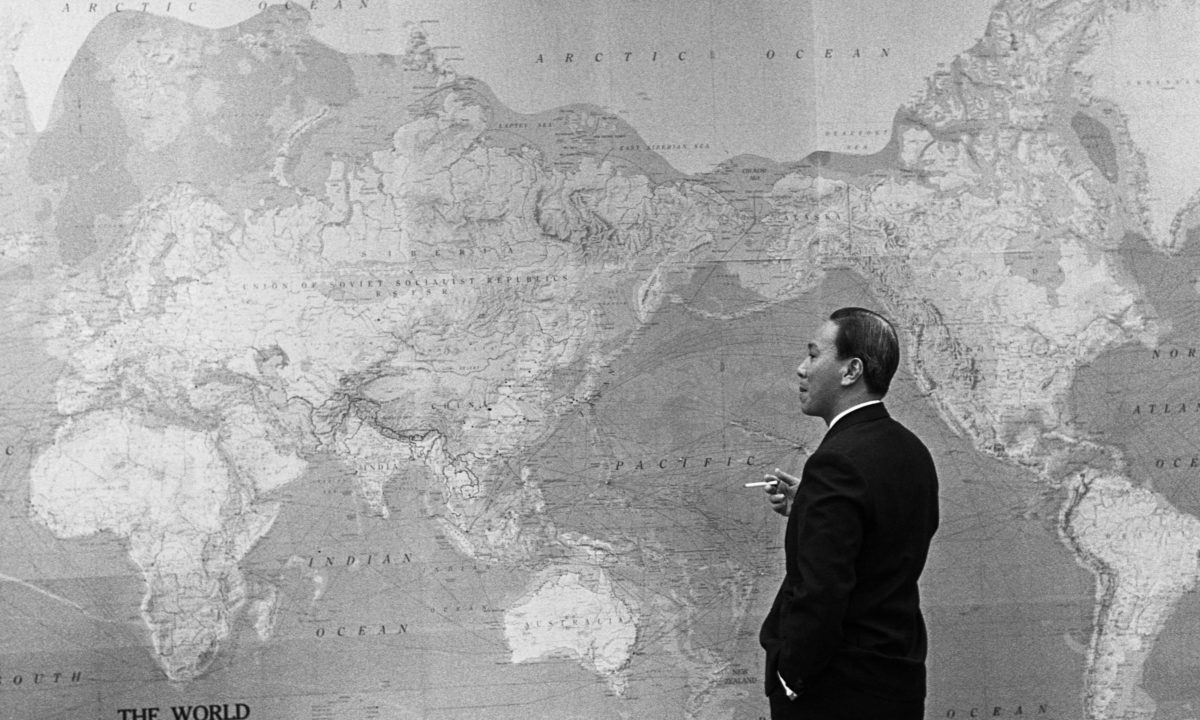Given that the United States never issued a formal declaration of war, reaching a unanimous agreement on a precise start date for the Vietnam War is tricky.
There are a number of choices. The first is May 16, 1945, the date the Office of Strategic Services (forerunner of the CIA) sent an Army special operations group, code-named the Deer Team, to assist Viet Minh rebels fighting the Japanese occupying their land. A second noteworthy date is July 8, 1959, when American advisers Maj. Dale R. Buis and Master Sgt. Chester M. Ovnand became the first U.S. soldiers to die from enemy fire. They were killed in a guerilla attack at Bien Hoa, near Saigon.
A third contender is Aug. 7, 1964, when Congress passed a joint resolution empowering President Lyndon B. Johnson to take any necessary measures to defend U.S. allies in Southeast Asia. Passed in the wake of the Gulf of Tonkin incident — an Aug. 2 North Vietnamese torpedo boat attack on the U.S. destroyer USS Maddox — the resolution gave Johnson all the authority he needed to wage war without formally declaring one.
I prefer Nov. 1, 1955 — the date chosen by the official U.S. Vietnam War 50th Commemoration Commission, because it marked the formation of Military Assistance Advisory Group-Vietnam, a U.S. command formalizing American military support for South Vietnam. The United States had maintained a military assistance group in Vietnam since 1950 to support France’s battle against the Viet Minh independence movement in the First Indochina War. However, the nation of South Vietnam, formally the Republic of Vietnam, did not come into existence until 1955.
GET HISTORY’S GREATEST TALES—RIGHT IN YOUR INBOX
Subscribe to our HistoryNet Now! newsletter for the best of the past, delivered every Monday and Thursday.
Phases of the Vietnam War
The U.S. war in South Vietnam can be divided into two phases. The first, or “advisory,” phase stretched from Nov. 1, 1955, to March 8, 1965. During this phase, U.S. military personnel in South Vietnam did not have an official combat role, although some advisers, particularly Special Forces advisers, and helicopter crews often found themselves in the middle of combat in the final years of that period.
The second, or “main,” phase began March 8, 1965, when the 9th Marine Expeditionary Brigade came ashore at Da Nang, the first deployment of an American ground maneuver unit to South Vietnam. Within a few months, U.S. military activities expanded from air base security to conventional offensive operations. The American advisory and assistance effort that began in 1955 continued throughout the main phase of the war but was overshadowed by conventional military operations, which continued until the Paris Peace Accords were signed on Jan. 27, 1973.
I consider the most appropriate end date for the U.S. conflict in Southeast Asia to be May 15, 1975, when Marines, supported by the Navy and Air Force, conducted an operation that recaptured the U.S. merchant vessel SS Mayaguez, seized by Khmer Rouge communists off the coast of Cambodia. Saigon had already fallen to North Vietnamese forces on April 30, 1975.
Dr. Erik Villard is a Vietnam War specialist at the U.S. Army Center of Military History at Fort McNair in Washington D.C.
historynet magazines
Our 9 best-selling history titles feature in-depth storytelling and iconic imagery to engage and inform on the people, the wars, and the events that shaped America and the world.






